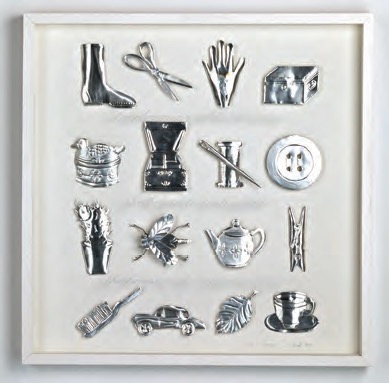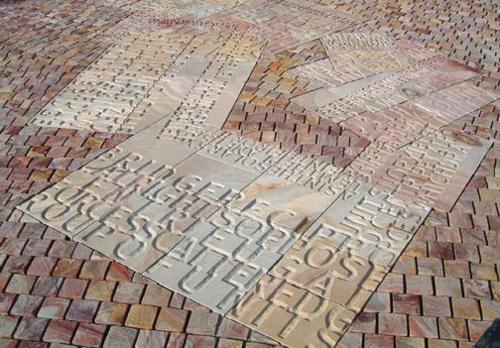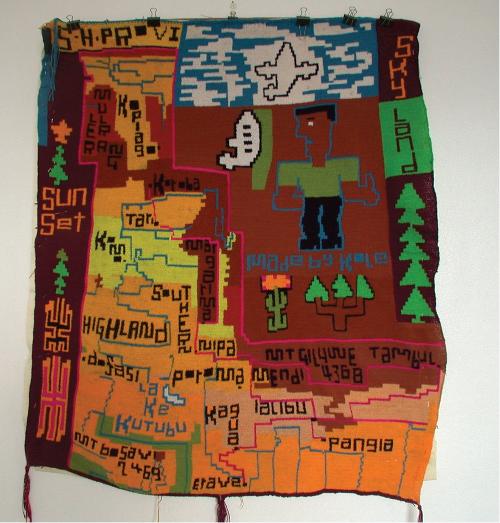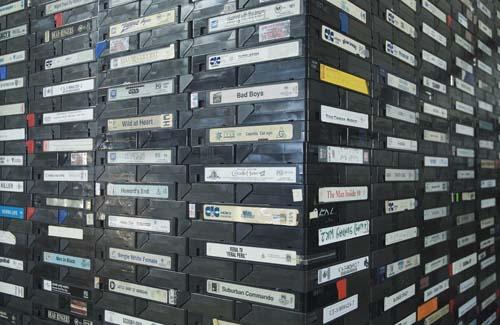
In her latest exhibition, 'The Mother Lode', Karen Genoff shows that the feminine neuroses bound up with domesticity, aging and motherhood can be a rich vein for artistic exploration. This is an exhibition where the cumulative impact creeps up on you. Initially it is difficult, probably impossible, to avoid being seduced by the sheer allure and virtuosity of her aluminium assemblages. Not since Fiona Hall did wondrous, erotic things with sardine cans has an artist manipulated aluminium sheet with such sensual dexterity. In the soft, pliable qualities of sheet aluminium, Genoff has found a metal medium to embody aspects of the feminine sensibility.
In a suite of three exhibitions since 2002 she has progressively built an autobiographical poetics of domesticity, based on eliciting metaphorical resonance in the intimate and mundane objects of her home and garden. She has sub-titled the exhibition, ‘artwork inspired by the constancy of housework’. Yet in its own way, this is an exhibition about transcendence. In her notes for the exhibition she has quoted from Gaston Bachelard’s seminal Poetics of Space - "When I hold an apple in my hand I hold the universe", and “The miniature transpires to the universal.”
Genoff works habitually by embossing sheet aluminium, through using a pencil to draw intricate decorative patterns on the reverse side. She cuts the sheets into small figurative shapes to simulate soft fabrics and domestic items, and in her major pieces attaches dozens of components to form complex assemblages. The works are presented as museological specimens displayed in pristine white box frames with text overlaid on the glass in pale, barely legible cursive lettering.
A humorous note of self-deprecation running through the texts acts as a counterpoint to the decorative finesse of her assemblages. This is most overt in the series of four works titled ‘Portraits of the Artist at Mid-life’. For instance, ‘My Metal’, is a vaguely oriental suit of mock ‘domestic armour’, encased in its box frame with the glass bearing the message “On Sunday she began what some may say were the extraordinary preparations for the inevitable return of her four teenagers.” In another, ‘Invisible Me’, the sur-title reads “After calling out to others for the third time she wondered how it was that she had so successfully achieved the recipe for invisibility when she had not included it on her shopping list.” It is this ambivalent tone of dead-pan humour infused with both pathos and pleasure that gives her work its poignancy.
There is a self-conscious touch of the obsessive neurotic in Genoff’s approach to both domesticity and to the labour-intensive medium of her art. Like Woody Allen, or at a local level Barbara Hanrahan, she uses art as a heightened reality to explore this. In ‘House as Universe’ from her ‘Clutter’ series, we are presented with sixteen small domestic objects, including a peg, button, tea pot, scissors, shoe, and a cactus plant, all formed from aluminium sheet, arranged in an orderly grid, framed and overlaid with the cursive comment: “Daydreaming whilst cleaning she began to contemplate the home as her entire universe”. Then there is ‘Clutter on the brain’, bearing the message “She walked into the room but could not remember why she had entered the door or even what she intended to do”. Those who have reached a certain age of wisdom where they have forgotten more than some will ever know may identify with this.
Genoff’s daughter, now a teenager, has been an enduring inspiration for her work. In her ‘Saintly’ series of aluminium and brass icons she celebrates childhood play, portraying a stylised cut-out doll-child in a manner reminiscent of Mexican folk art. There is a faint echo, too, of the more benign works of Hanrahan. “Cats do not eat apples, but occasionally will consent to wearing hats” is the message on one of these works. In her ‘Insecta Imaginata’ series she creates cockroach-inspired creatures, ingeniously fabricated in aluminium and brass, encased in boxes with the obligatory text - in this case imaginary letters directed to a fictitious entomologist.
Getting the tone right is everything and Genoff does not always succeed, teetering occasionally on the brink of self-indulgence. Her profligate imagination and equally prolific instinct to make things can see her diffusing the impact of her work with extraneous elements. For instance, the two bodies of ceramic works seem an unnecessary inclusion in this exhibition. However, these quibbles should not distract from recognition of Genoff’s achievement in creating highly original works imbued with a distinctive voice.












